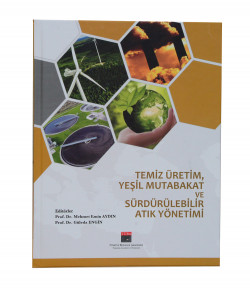Micropollutants In Sewerage Sludge And Their Agricultural Use

Micropollutants In Sewerage Sludge And Their Agricultural Use
Sewage sludge is a by-product of wastewater treatment, and its amount is increasing day by day depending on the increasing water consumption and the amount of wastewater generated. In our country, within the scope of the regulation on the use of sewage sludge in soil, limit values for heavy metals and some organic compounds in stabilized sewage sludge have been determined. However, many other micropollutants such as pharmaceuticals that are not considered within the scope of the regulation are also present in high concentrations in sludge. Conventional wastewater and sludge treatment processes are insufficient for the removal of micropollutants, and the agricultural use of stabilized sludge causes the transport of pollutants to environments. Within the scope of the study, heavy metals, PAHs, PCBs, pharmaceutical pollutants content of anaerobically stabilized sludge in Konya urban wastewater treatment plant were determined and also the ecotoxicological effect of stabilized sludge was evaluated. It has been determined that heavy metal and PCB values in stabilized sludge are below the limit values given in the regulation, and PAH compounds exceed the regulation limits especially during domestic heating periods. In ecotoxicological evaluations, it was observed that stabilized sludge has acute toxic properties. As a result of the application of stabilized sludge to soil, a high short chronic risk has been determined for some antibiotic compounds. Therefore, the sewage system should be effectively monitored and controlled to reduce pollutants, especially in recycled water and treatment sludge. It is necessary to monitor of sewage sludge and improve treatment processes to prevent micropollutants from sludge reaching to the environment.
